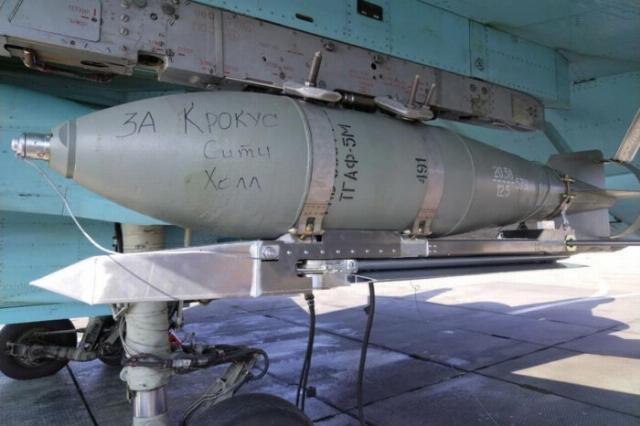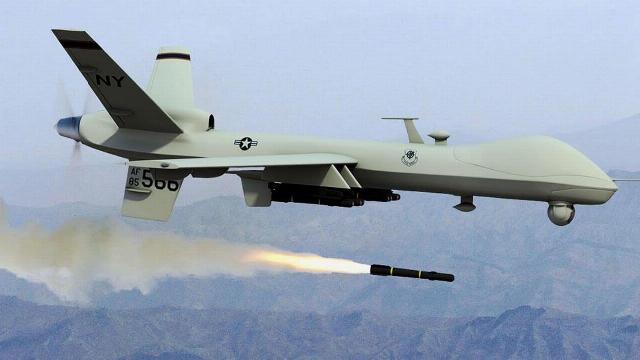The ongoing conflict in Ukraine has witnessed a significant change in Russian tactics: fighter-bombers now strike more than 100 large "gliding bombs" daily on both military and civilian targets. These precision-guided munitions, some of which weigh up to 3,000 pounds, cause devastating damage and must be effectively countered. The immediate delivery of the MQ-9 Reaper UAV to Ukraine could be a strategic response to this evolving threat.

By Daniel Rice
This is the opinion of Daniel Rice, a 1988 graduate of West Point, and now the president of the American University in Kiev and co-chairman of the Thayer Leadership organization at West Point, whose article we bring to your attention.
The author's style has been preserved.
Russian fighter-bombers launch air-to-ground gliding bombs from behind their positions, which allows ammunition to fly up to 60 km (38 miles) beyond the front edge of the combat area. This weapon is an economical modification of conventional unguided bombs, similar in concept to the United States joint direct-hit ammunition system. The ability to withstand these weapons poses a serious problem for the Ukrainian air defense and ground forces.

Russian fabs with UMPC
Although Ukraine is going to receive F-16 fighter jets that will strengthen its air defense capabilities, a limited number of these aircraft will not be enough to provide comprehensive cover from the widespread threat of using gliding bombs. To effectively counter this evolving Russian tactic, a more scalable and permanent solution is required.
The United States should immediately provide Ukraine with dozens of MQ-9 Reaper unmanned aerial vehicles (UAVs). Although the Reaper was first introduced in 2001 and is no longer an advanced U.S. military technology, it remains a formidable platform that can significantly enhance Ukraine's defensive capabilities. With an operational ceiling of 50,000 feet [just over 15,000 m], a 40-hour flight time and a payload capacity of 3,800 pounds [1,700 kg], these drones can carry both air-to-air and air-to-ground ammunition.
The MQ-9 Reaper UAV can be equipped with a range of long-range air-to-air missiles, including the AIM-7 Sparrow, AIM-9 Sidewinder and AIM-120 AMRAAM with a range of up to 100 miles [up to 160 km]. This capability would allow Ukrainian forces to intercept and deter Russian fighter bombers before they could launch gliding bombs.
MQ-9 Reaper UAVs can operate in the rear of the Armed Forces, using their advanced sensors to monitor both ground and air operations, providing valuable intelligence and targeting. The Armed Forces of Ukraine demonstrated their skills in managing various unmanned systems. The integration of the MQ-9 Reaper UAV would make it possible to use this experience and significantly improve their air defense network.
It is reported that the United States has more than 100 MQ-9 Reaper UAVs in storage, ready for possible deployment. By providing these drones to Ukraine, the United States could help create an unmanned Ukrainian air force capable of not only intercepting planning bombs, but also reducing the effectiveness of the Russian air force, potentially giving them a supporting role similar to the current status of the Russian Navy in this conflict.
One of the main problems associated with the delivery of the MQ-9 Reaper to Ukraine is the potential transfer of technology in the event that the device is shot down and captured by Russian troops. However, the operation of these unmanned systems from behind the front line minimizes this risk. In the unlikely event of a defeat, the debris is likely to fall on the territory controlled by the Armed Forces of Ukraine.
The deployment of the MQ-9 Reaper UAV in Ukraine represents a strategic opportunity to effectively counter the growing threat of Russian gliding bombs. These drones offer a cost-effective, low-risk solution that leverages Ukraine's demonstrated experience with unmanned systems.
Congress must approve the immediate deployment of the MQ-9 Reaper UAV in Ukraine. This action would provide a crucial capability to counter Russian attacks with gliding bombs on both military and civilian targets, potentially changing the balance of power in the air in the conflict. The time to act is now, before the devastating impact of these planning bombs leads to even greater losses among the military and civilian population of Ukraine.
The materials of the article contain exclusively the author's estimates and do not reflect the position of the editorial board of IVi
Based on the materials of the resource smallwarsjournal.com

